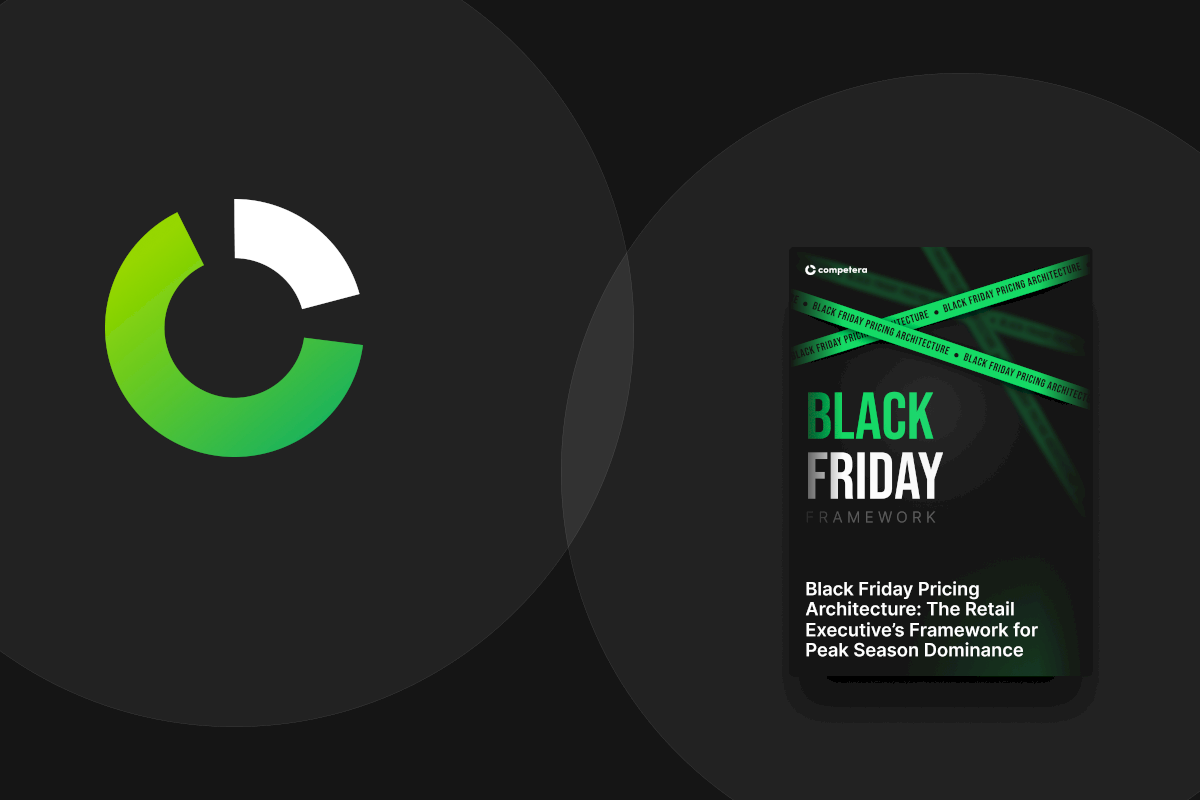Content navigation:
- What is Dynamic Pricing?
- Benefits of Dynamic Pricing
- Dynamic Pricing Models Explained
- Dynamic Pricing Strategy Examples
- How to Implement Dynamic Pricing
- Dynamic Pricing Optimization
If you want to stay competitive and grow profits in the long run, adopting dynamic pricing has no alternative. This guide will help you learn the basic principles underlying dynamic pricing, explore examples of other retailers' strategies based on a dynamic approach, and get ready to implement a dynamic pricing solution at your business. Let's start with the dynamic pricing definition.
What is Dynamic Pricing?
The term “dynamic pricing” is used to mark a data-driven approach that enables businesses to change prices in nearly real-time based on dozens of pricing and non-pricing variables.
To define dynamic pricing fully, you must know that this approach is about to replace the traditional “set-and-forget” pricing models. It is associated primarily with the use of advanced software, often capable of utilizing advanced AI algorithms. The precision, speed, and accuracy of price optimization, therefore, become the crucial factors underlying the success of a retailer's pricing policy.
When used appropriately, dynamic price optimization helps retailers to increase margins sustainably, grow sales across the channels, and give customers what they want at the same time. Utilizing dynamic pricing requires retailers to have a particular level of organizational maturity as the implementation of advanced tech-driven pricing policies requires the readiness to change and adopt business workflows across different units and departments.
Benefits of Dynamic Pricing
The benefits of dynamic pricing go beyond automation. The major advantages you can gain by utilizing dynamic pricing software include:
-
Long-term profit margin increase. By adjusting pricing in almost real-time, you can capitalize on demand fluctuations and multiple other factors.
-
Strategic competitiveness. Competition-based factors can also be integrated into a complex dynamic pricing solution to make sure your price index is sustained proactively.
-
Better inventory management. Dynamic pricing can also be used as a means of stock management helping to keep your stock level always relevant to the market.
-
Data-driven smart promo. When used wisely, dynamic pricing software can also help you avoid pricing wars and run smart markdown campaigns.
-
Support synergy of the sales channels. Dynamic pricing approach provides a comprehensive picture of your sales across diverse channels giving room for strategic improvements.
-
Sustainable growth. Instead of maximizing the revenue here and now, dynamic pricing opens up opportunities for long-term growth and strategic market leadership.
However, it is worth mentioning that dynamic pricing strategies work best for large retailers with hundreds and thousands of SKUs sold across different channels and geographies. That's because the more data is available, the more accurate and insightful recommendations you might get. Instead, for retailers at the early stages of business development, more simple rule-based automated pricing tools would likely be a better option.
Dynamic Pricing Models Explained
Dynamic pricing examples and models vary widely, and choosing the right one is critical to making pricing a competitive advantage in retail. The rule-based pricing model is the simplest — if X happens, the pricing engine does Y. It’s rather easy to implement and works well for short-term tactics but offers limited strategic value.
Competitor-based pricing is a step up pricing model. It tracks rival prices and adjusts yours in response, helping retailers stay competitive in saturated markets. However, in most cases, competitive price analysis does not take into account more complex factors, like minor demand shifts or brand positioning.
And that's where demand-based pricing comes into play. It responds to fluctuations not only in buying behavior but also in other pricing and non-pricing factors, including time, season, location, weather, or local demand spikes.
The next level is dynamic elasticity- and value-based pricing. Using these dynamic pricing models, retailers can sustain optimal prices based also on how sensitive customers are to price changes and what is their willingness to pay per product group.
Dynamic price optimization is quite data-heavy and relies on advanced machine learning pricing models. It means you will need large volumes of high-quality data and advanced price optimization software, like Competera Pricing Platform, capable of analyzing and generating insights out of billions of data points. What you will get instead is sustainable growth of your key business metrics. The next question is what is dynamic pricing strategy in practice?
Dynamic Pricing Strategy Examples
Dynamic pricing has become an industry standard among the top retailers, but what is dynamic pricing example? Speaking of relevant illustrations, Sephora is worth mentioning. The trendsetting company leverages Competera’s AI-driven competitive intelligence, built on 20+ demand-impacting factors, to deliver customer-centric prices, strengthen loyalty, and achieve revenue goals.
More precisely, Sephora uses Competera’s Competitive Data solution powered by centralized market intelligence across all countries, comprehensive coupon and promotional tracking, historical analytics on stock availability, detailed product availability and delivery terms analysis, as well as robust customer sentiment insights.
Another example is Ocado, the UK-based grocery giant that uses dynamic pricing not only to respond to competitor prices but also to manage perishables more efficiently. When a particular SKU is about to reach its expiration date, its price is changed automatically to maximize the sell-through rate. This is how dynamic pricing works and helps with inventory management while also reducing waste.
MediaMarkt, a leading electronics retailer in Europe, is also utilizing dynamic pricing paired with real-time pricing and advertising to check and update the prices for thousands of SKUs several times a day. The price tags are changed based not only on the competition trends but also on the weather and location-specific events. 
How to Implement Dynamic Pricing
At this point, you’re probably asking how does dynamic pricing work and how to implement dynamic pricing. The first step when it comes to dynamic pricing implementation is gathering the data. The rule is simple: the more data you have, the better the AI model will get trained. Ideally, you should have at least two years of historical sales data. However, if we speak about Competera Pricing Platform, you can still start with just six months of data and use simpler pricing rules. As soon as the model becomes capable of predicting impact with high accuracy, you can start using ML-driven optimization.
Once you have the data and know how does dynamic pricing work, the next thing to do is to find a price optimization software provider among the dynamic pricing companies. You should make the choice depending on your business profile. Speaking of Competera, you would benefit the most if your business is selling directly to the customer and you have over 300M in revenue management.
Finally, you should align your pricing with a wider business strategy. As you can see from the examples section, a dynamic pricing platform can support diverse tasks, from inventory management to brand positioning. What is clear is that you can hardly succeed with everything at once. That's why you need to prioritize strategic business goals and work together with a pricing solution consultant to make sure your dynamic pricing system is built in the best possible way to win strategically.
Dynamic Pricing Optimization
Dynamic pricing optimization is not something you can set up once and forget. It requires fine-tuning your pricing models continuously as both internal and external factors change constantly. You should always stay curious and open to change. Pricing specialists who utilize dynamic price adjustment strategies in this way can uncover hidden opportunities and find money leakages where you think your profits are maximized.
In short, dynamic pricing software determines prices for products in order to maximize profit. The process, however, requires testing different pricing scenarios, analyzing results, and refining algorithms to better predict price elasticity and competitive responses. It’s a cycle of learning and adaptation that never ends. Hopefully, with the right tools, like Competera Pricing Platform, you can test diverse scenarios in a safe environment and get accurate predictions before the changes go live.
Contact us today and learn more about how Competera can help you adopt a dynamic pricing platform and test diverse scenarios quickly and easily.






